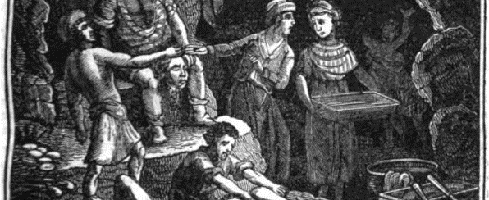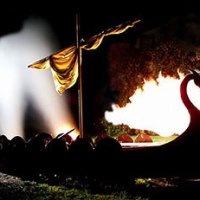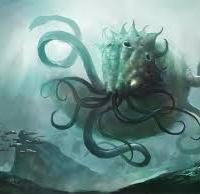Gather around the fire, lads and lasses, and let me tell ye a tale of the darkest depths of Scottish legend – the story of Sawney Bean. Sawney Bean was a notorious cannibal who roamed the Scottish countryside in the 16th century, feasting on unsuspecting travelers who happened upon his lair. He was said to be the leader of a clan of inbred cannibals, with a wife who was also his sister (eww). Legend has it that Sawney and his clan would ambush travelers on the road, drag them back to their cave, and then feast on their flesh. They were so skilled at this gruesome practice that they managed to evade the authorities for over 25 years. But eventually, the king of Scotland caught wind of their heinous deeds and set out with a group of soldiers to capture them. They searched high and low, but Sawney and his clan had hidden themselves deep within their cave. However, the king was determined to find them, and he ordered his men to search every inch of the cave. What they found inside was nothing short of a horror show. The cave was filled with the remains of their victims, with body parts strewn about like macabre decorations. Sawney and his clan were arrested and brought to Edinburgh for trial, where they were found guilty and executed. To this day, the legend of Sawney Bean lives on, a warning of the darkness that can lurk within the human soul. So if you’re ever travelling through the Scottish countryside and happen upon a cave, be sure to watch your step – you never know what might be lurking inside.
Read on for more… if you dare!


























